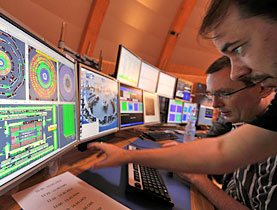Cosmic magnifying glass reveals black hole details
Swiss astronomers have used a cosmic "magnifying glass" to study the inner parts of a disc around a black hole ten billion light years away.
Scientists from the Federal Institute of Technology in Lausanne were part of a European Space Organisation (ESO) team that employed a magnification effect known as macrolensing, which uses a galaxy as a natural telescope.
That effect, combined with the ESO’s Very Large Telescope, provided them with a level of detail 1,000 times greater than the world’s most powerful devices.
The ESO said it was able to study the disc rings on the black holes, confirming a phenomenon that had in the past existed only theoretically.
Additionally, scientists said one of the 20 black holes they looked at had no massive host galaxy. Supermassive black holes have masses up to hundreds of millions of times greater than that of the Sun. They are usually found in the centres of most massive galaxies including the Milky Way.
Astronomers said they also detected a cloud of gas 2,500 light years – or just under 25,000 billion kilometres – wide, bathed in radiation. They called it “the blob”.

In compliance with the JTI standards
More: SWI swissinfo.ch certified by the Journalism Trust Initiative









You can find an overview of ongoing debates with our journalists here . Please join us!
If you want to start a conversation about a topic raised in this article or want to report factual errors, email us at english@swissinfo.ch.